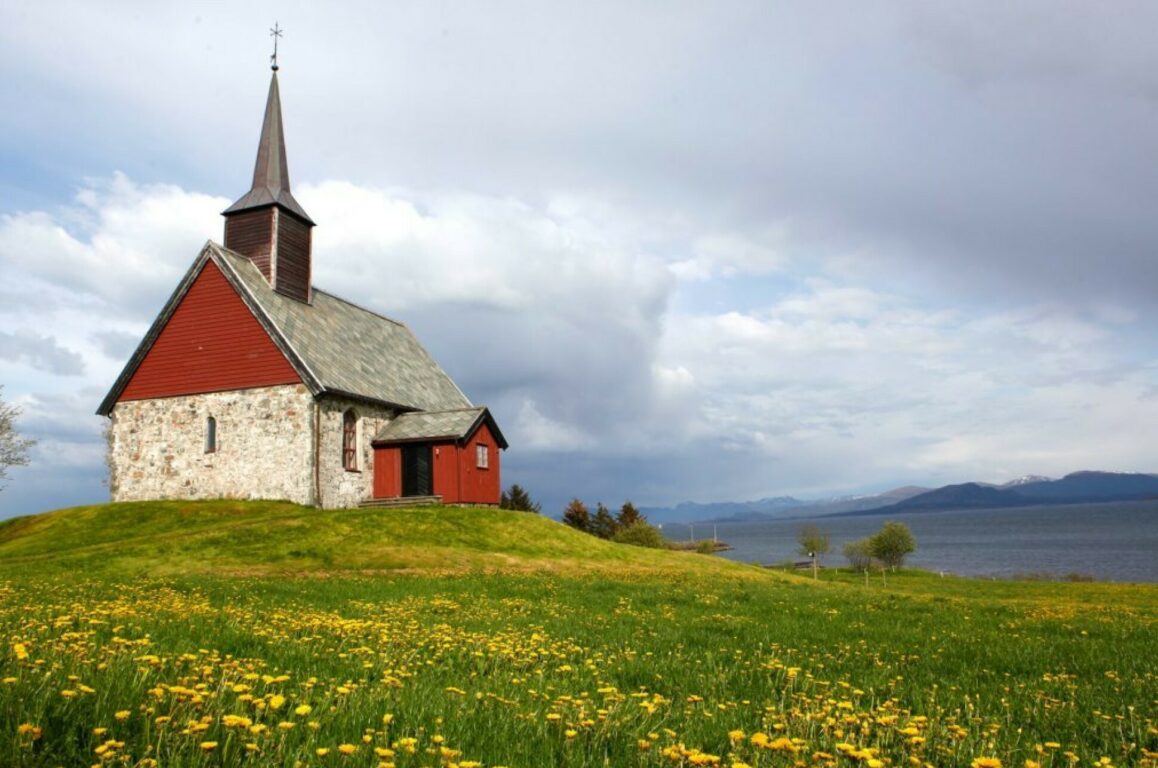Smøla and Edøy Old Church and Kulisteinen
Pilegrimage on Smøla
There are great opportunities for hiking in the local area. It is for example possible to walk from Gurisenteret, via Edøy Old Church and over the bridge to Kuløy and Kulisteinen. Another route is to walk from Gurisenteret via Stjernerøya, the church and up to the highest point west of Edøygarden where there is a coastal fortress from WW2. It is also nice to go to the pilgrimage hostel Eco Camp Norway. The next day you can hike further to the pilgrimage site Rosvoll.
Gurisenteret
The culture center Gurisenteret is located on Edøy. This is where you'll find Pilgrim Center Smøla. Gurisenteret also house exhibitions of various kinds, and has one of the best outdoor stages in Norway with room for 1000 people. The outdoor stage is shaped like a Greek amfi theater. The play "Fru Guri av Edøy" is staged here annually. At Gurisenteret there is also tourist information, a café and a waiting room for the ferry. Gurisenteret contributes to the keeping of the history and attractions of the island gathered and available to visitors. The center mainly focuses on the time of christianization and medieval time.
https://www.gurisentret.no/
Edøy Old Church
In Edøyfjorden, a little further in from Kuløy, you'll find Edøy. Here is Edøy Old Church, a stone church from around 1190 - a natural stop for people traveling along Kystpilegrimsleia. It is likely that the church was built as a private chapel for the king's ombudsman on the island. The church has a rectangular nave and a choir that is placed crookedly in relation to the nave. The church was adapted in 1690.
There are also other cultural heritage at Edøy, like an ancient burial ground, and a three armed star cairn. This indicates that Edøy has been a place of importance since prehistoric times.
Kulisteinen
Kulisteinen (Kuli stone) at Kuløy in Smøla has a runic script that points to the introduction of christianity: "Tore and Hallvard erected this stone after.... Twelve winter, christianity had been in Norway....". It is likely that relatives have erected the stone in memory of a departed family member, and this type of runic writing is common on stones like this from the Middle Ages. What is special about this stone is that it can be dated, and at the same time give an insight into when christianity was introduced in Norway. Archeological research has shown that there was a wooden bridge over a boggy area that lead to the place where the stone was taken from. It was common to build bridges in connection with these type of monuments, and it is therefore likely that the bridge was made at the same time as when the stone was erected. The bridge dates to 1034. The writing and language on the stone indicates that it dates from the early 11th century. Pilegrimsleden | Kulisteinen - on the UNESCO World Heritage List
Much therefore point to that Kulisteinen is referencing Mostertinget (the Moster Thing) that took place in the early 1020s. Te original Kulisteinen with the runic writing is now located in The University Museum in Trondheim, but a copy has been placed on Kuløy where the stone originally stood.
